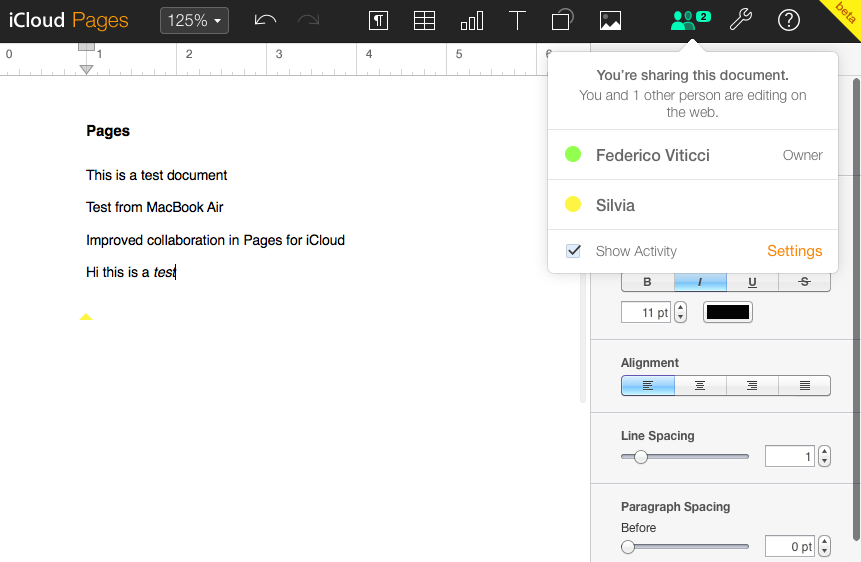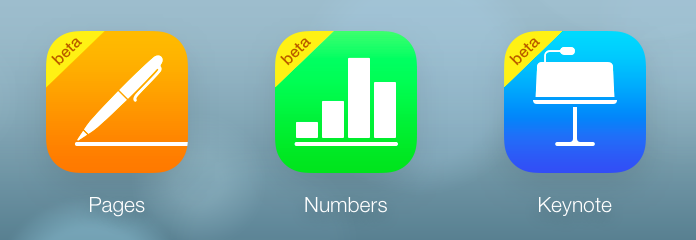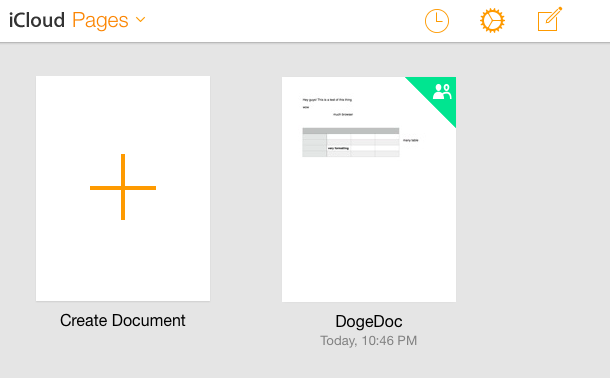Dan Moren has an overview of the changes Apple brought to iWork for iCloud today:
Several of the most prominent updates apply to all three of the apps in the suite: You can now have up to 100 collaborators in a single document at the same time—which hopefully won’t be too confusing—and you can choose from almost 200 new fonts. There are also additional options in the color panel, and you can finally create and format both 2D and interactive charts.
Apple has been making frequent and useful improvements to its iWork apps over the past few months. After reading about today’s update for the web apps, I decided to check out the collaborative editing again, and it’s now much better than what it used to be.
Once invited to collaborate on a document in iWork for iCloud, other users can edit their display name in a sharing menu; the name will be assigned a color, which will be shown as a cursor in the document while edits are being made in real-time. The experience is highly reminiscent of Google Drive for the web, and it worked well in my tests with a couple of other users. I could see edits in real-time in the browser, and I didn’t end up with duplicates or dialogs asking me to “take action”.
I don’t know if the collaborative changes were rolled out today or in the past few months, but I’m impressed by the progress that’s been made so far and it’s worth pointing it out. The native iWork apps for OS X and iOS still don’t support the same real-time editing of the iCloud versions, which is why we can’t switch to Pages full-time yet. I really like Apple’s implementation of collaborative editing on the web (you can “jump” to a user’s cursor by clicking their name), and I can’t wait to have the same features on iOS.





